Related Research Articles

The Constitutional Union Party was a political party which stood in the 1860 United States elections. It mostly consisted of conservative former Whigs from the Southern United States who wanted to avoid secession over slavery and refused to join either the Republican Party or Democratic Party. The Constitutional Union Party campaigned on a simple platform "to recognize no political principle other than the Constitution of the country, the Union of the states, and the Enforcement of the Laws".

Thomas Worthington was an American politician who served as the sixth governor of Ohio.

Edward Tiffin was an American politician who served as the first governor of Ohio and later as a United States Senator from Ohio as a member of the Democratic-Republican party.

Paris Chipman Dunning was a Democratic state representative, state senator, senate president, the tenth lieutenant governor, and the ninth governor of the U.S. state of Indiana from December 26, 1848, to December 5, 1849. He is the only person to hold to every elected seat in the state government under the 1816 constitution. His brief term as governor was marked by the calling of a state constitutional convention and overshadowed by the national anti-slavery debate, where Dunning urged state leaders to issue and forward resolutions to Congress expressing opposition to the expansion of slavery. As a delegate to the subsequent convention, he successfully advocated legislative and educational reform. As the American Civil War broke out, he left the Democratic party and declared for the Union, personally raising many companies of soldiers for the war effort. He returned to the state senate during the war, and then resumed his law practice after his term ended. He remained popular in the state, and declined several nominations to run for office after retiring from politics.
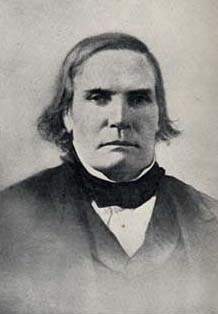
Jesse Burgess Thomas was an American lawyer, judge and politician who served as a delegate from the Indiana Territory to the tenth Congress and later served as president of the Constitutional Convention which led to Illinois being admitted to the Union. He became one of Illinois' first two Senators, and is best known as the author of the Missouri Compromise of 1820. After his retirement from the U.S. Senate in 1829 he lived the rest of his life in Ohio.
The Constitution of the State of Ohio is the basic governing document of the State of Ohio, which in 1803 became the 17th state to join the United States of America. Ohio has had three constitutions since statehood was granted.
James Caldwell was the first member of the United States House of Representatives to represent Ohio's 4th congressional district.
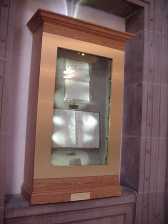
The Constitution of Indiana is the highest body of state law in the U.S. state of Indiana. It establishes the structure and function of the state and is based on the principles of federalism and Jacksonian democracy. Indiana's constitution is subordinate only to the U.S. Constitution and federal law. Prior to the enactment of Indiana's first state constitution and achievement of statehood in 1816, the Indiana Territory was governed by territorial law. The state's first constitution was created in 1816, after the U.S. Congress had agreed to grant statehood to the former Indiana Territory. The present-day document, which went into effect on November 1, 1851, is the state's second constitution. It supersedes Indiana's 1816 constitution and has had numerous amendments since its initial adoption.

Nathaniel Massie was a frontier surveyor in the Ohio Country who became a prominent land owner, politician, and soldier. He founded fourteen early towns in what became the State of Ohio, including its first capital, Chillicothe. In 1807, the Ohio General Assembly declared him the winner of the election for governor, but he refused the office.
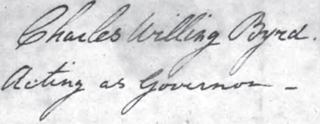
Charles Willing Byrd was an American politician who was the Secretary of the Northwest Territory, acting Governor of the Northwest Territory and a United States district judge of the United States District Court for the District of Ohio.

The Enabling Act of 1802 was passed on April 30, 1802, by the Seventh Congress of the United States. This act authorized the residents of the eastern portion of the Northwest Territory to form the state of Ohio and join the U.S. on an equal footing with the other states. In doing so it also established the precedent and procedures for creation of future states in the western territories.

Ephraim Cutler was an early Northwest Territory and Ohio political leader and jurist.

Joseph Darlinton was an American politician in the U.S. state of Ohio and in the Northwest Territory prior to Ohio statehood. Darlinton represented Adams County as a member of the Northwest Territory House of Representatives and the Ohio Senate. Darlinton also served as a delegate to the convention that drafted the first state constitution for Ohio.
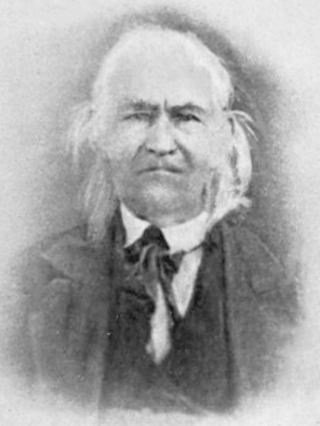
Israel Donalson was an early settler in the Northwest Territory, and helped write the first Ohio Constitution.
James Pritchard was an American Revolutionary War veteran and Democratic-Republican politician who served in the legislatures of the Northwest Territory, and later in Ohio, and was unsuccessful in runs for congress.
Elijah Woods was a politician from Belmont County, Ohio who was a delegate to the convention that drafted the first constitution of the U.S. State of Ohio in 1802 and served in the Ohio House of Representatives soon after statehood.
John Messinger was an American pioneer, politician, teacher, and surveyor who was the first Speaker of the Illinois House of Representatives. Born in Massachusetts, Messinger was educated in Vermont and married the daughter of Matthew Lyon. He left with Lyon to Kentucky, but disagreed with his stance on slavery and came to the Indiana Territory in 1802. He served in the Indiana Territorial Legislature and advocated for the creation of the Illinois Territory. When the state of Illinois was created in 1818, he co-authored its constitution and served in its first General Assembly as Speaker of the House. Messinger was also a prominent surveyor, establishing what is now the state line between Illinois and Wisconsin on behalf of the U.S. government.
John Paul was a pioneer in Ohio and Indiana, founding Xenia, Ohio and Madison, Indiana. He was a delegate at the convention that drafted the constitution of Ohio, and was a state senator in the first general assembly after statehood. He also served in the first state senate of Indiana. He founded the second newspaper in Indiana. He was known as "Colonel John Paul" for his services in the American Revolutionary War and the War of 1812.
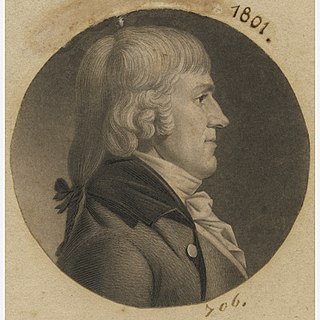
Benjamin Ives Gilman was a pioneer of the U.S. state of Ohio. He was a shipbuilder on the Ohio River and an extensive landholder. He was a delegate to the convention that wrote a constitution for the new state.
William Goforth (1731–1807), also called Judge William Goforth and Major William Goforth, was a member of the Committee of One Hundred and Committee of Safety in New York City, an officer of the New York Line during the American Revolutionary War, and was a member of the New York State Assembly after the war. He was one of the earliest immigrants to the Cincinnati area, where he was named a judge and was elected to the territorial legislature.
References
- Evans, Lyle S, ed. (1917). A standard history of Ross County, Ohio: an authentic narrative of the Past... Vol. 1. Chicago: Lewis Publishing Company. p. 244.
- Milligan, Fred J. (2003). Ohio's Founding Fathers. Lincoln, Nebraska: iUniverse. ISBN 0595750397. OCLC 53472872.
- Ryan, Daniel Joseph (1896). "First Constitutional Convention, Convened November 1, 1802". Ohio Archaeological and Historical Publications . V: 80–132.